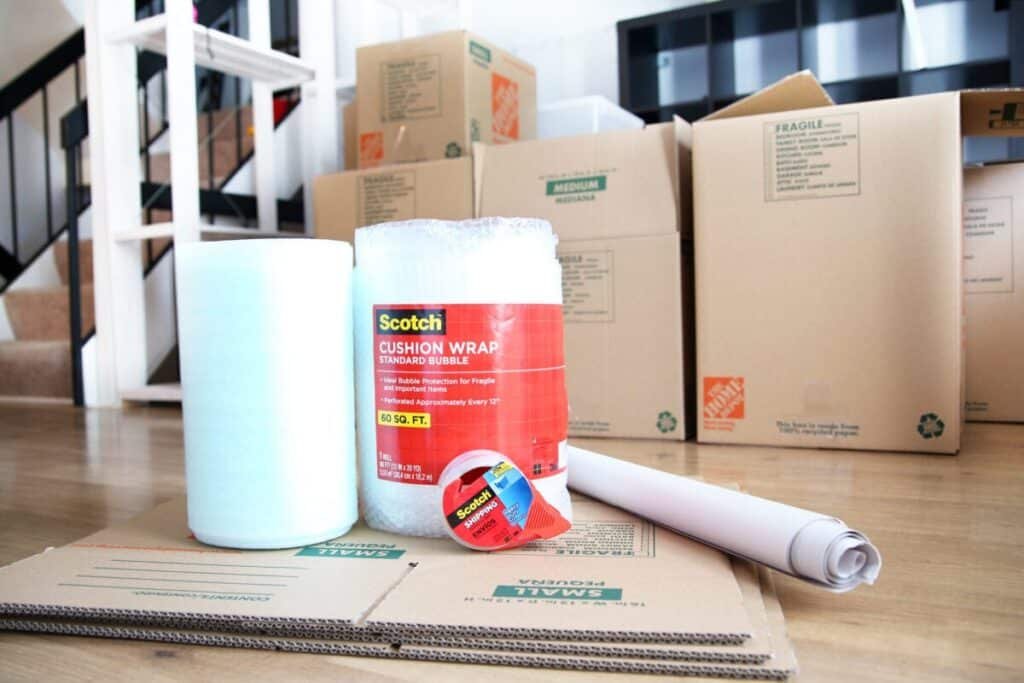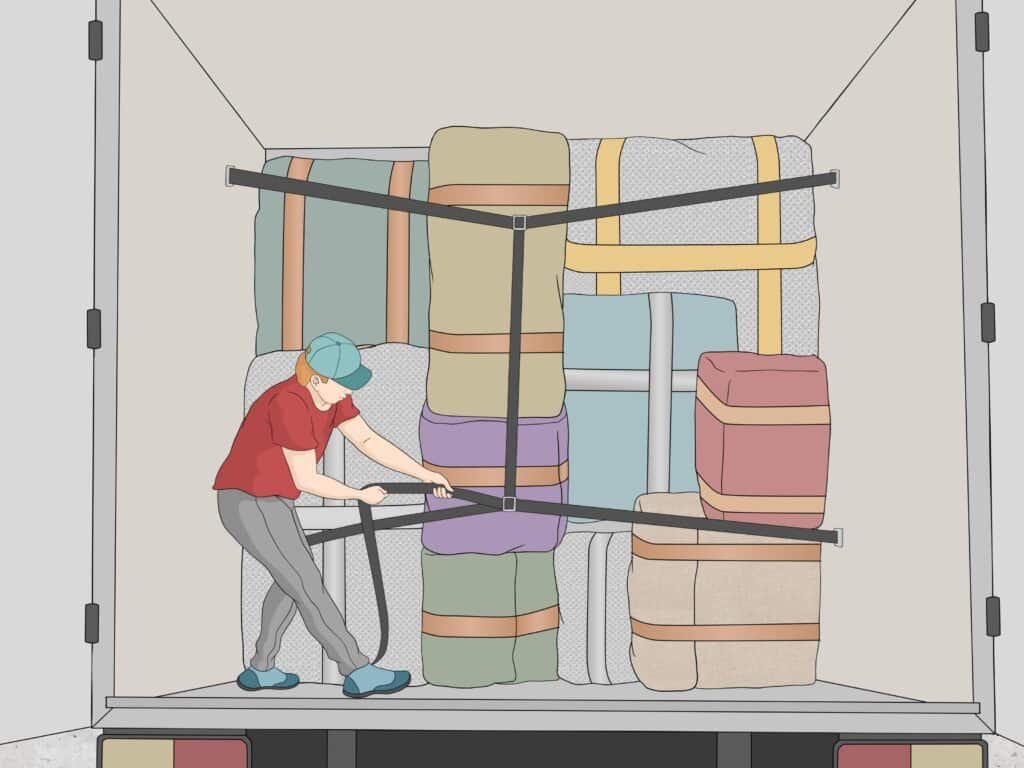Moving house is consistently ranked as one of life’s most stressful events. The sheer volume of tasks, from finding a new home to coordinating logistics, can be overwhelming. However, arguably the most time-consuming and critical aspect is packing. The way you pack for a move directly impacts the safety of your belongings, the efficiency of the moving day, and the ease of settling into your new space.
At Top Town Movers, serving clients across Ontario and specifically the North York area, we’ve witnessed countless moves. We know that proper packing is not just about putting things in boxes; it’s a strategic art form that can significantly reduce stress and prevent damage. This comprehensive guide will provide you with a step-by-step approach on how to pack for a move like a professional, ensuring your cherished possessions arrive safely and your transition is as smooth as possible.
- Learn More >>>>Packing / Unpacking
Phase 1: Preparation – The Foundation of a Smooth Pack
Before you even touch a box, laying the groundwork is essential. Skipping these preliminary steps is a common mistake that leads to chaos down the line.
1. Create a Master Moving Checklist and Timeline:
- Start Early: Begin planning and packing at least 6-8 weeks before your move date, especially if you have a large home.
- Detailed List: Break down the entire move into smaller, manageable tasks, including specific packing goals for each week.
- Room by Room: Dedicate specific days or weeks to packing certain rooms or categories of items.
2. Declutter Ruthlessly (The Golden Rule of Packing):
This is arguably the most impactful step on how to pack for a move efficiently and reduce stress. If you haven’t used an item in a year, it’s broken, or it no longer brings you joy, consider letting it go.
- Three Piles: As you go through each item, categorize it into:
- Keep: Items you genuinely need, use, or cherish.
- Donate/Sell: Items in good condition that someone else could use (clothes, books, small appliances, furniture).
- Discard/Recycle: Broken items, expired goods, or anything truly unusable.
- Be Brutal: Less stuff means less to pack, less to move (potentially saving on moving costs!), and less to unpack. This dramatically simplifies your entire move.
3. Gather the Right Packing Supplies:
Using the correct materials is vital for protecting your belongings. Don’t skimp here; it’s an investment in your peace of mind.
- Moving Boxes:
- Small (1.5 cu ft): For heavy items like books, tools, canned goods.
- Medium (3.0 cu ft): For general household items, small appliances, linens.
- Large (4.5 cu ft): For light, bulky items like pillows, blankets, towels.
- Extra-Large (6.0 cu ft): For very light, bulky items (e.g., comforters).
- Specialty Boxes: Wardrobe boxes (for hanging clothes), dish pack boxes (for fragile kitchenware), picture/mirror boxes (for artwork).
- Packing Tape: Invest in strong, wide packing tape. You’ll need a lot.
- Packing Paper: Unprinted newsprint is ideal for wrapping fragile items and filling voids in boxes.
- Bubble Wrap: For highly delicate items.
- Markers: For clear labeling.
- Labels/Color-Coding System: To easily identify box contents and destination rooms.
- Utility Knife/Box Cutter: For opening and breaking down boxes.
- Scissors: For cutting tape and paper.
- Moving Blankets/Furniture Pads: For protecting large furniture (if not provided by movers).
- Shrink Wrap: Useful for securing dresser drawers and protecting upholstery.
- Plastic Bags (Ziploc): For small parts, screws, and organizing small items.

- Learn More >>>>moving and packing company vaughan
4. Create an “Essentials” Box (Your Moving Day Survival Kit):
This is arguably the most important box you will pack for a move. It’s the one you’ll need immediately upon arrival at your new home. Pack it last, and ensure it travels with you, not on the moving truck.
- Contents:
- Toiletries (toothbrush, toothpaste, soap, shampoo, toilet paper)
- Medications (prescription and over-the-counter)
- A change of clothes for 1-2 days
- Pajamas
- Basic kitchen essentials (paper plates, cups, cutlery, coffee/tea, snacks, bottle opener)
- Important documents (passports, IDs, financial records, moving contracts)
- Phone/laptop chargers
- Basic tools (screwdriver, utility knife)
- First-aid kit
- Pet food and supplies (if applicable)
- Kids’ comfort items (favorite toy, blanket)
- Cleaning supplies for quick tidy-ups (multi-surface cleaner, paper towels, garbage bags)
Phase 2: Strategic Packing – Room by Room, Category by Category
Now, the actual packing begins. Follow a systematic approach to maintain organization and efficiency.
1. Start with Non-Essentials:
Begin packing items you won’t need until after the move.
- Storage Areas: Attic, basement, garage, storage closets.
- Off-Season Items: Clothing, holiday decorations, specialized sports equipment.
- Guest Rooms: Linens, decorative items.
- Books, DVDs, Collectibles: Items you don’t access daily.
- Learn More >>>>The BEST House Moving Tips (and Mistakes to Avoid)!
2. Pack Room by Room:
This is critical for organized unpacking. Do not mix items from different rooms in one box.
- Work Methodically: Tackle one room at a time. Within each room, focus on one category (e.g., all books, then all linens, then all decor).
- Clear a Space: Designate a clear area in each room for staging boxes.
3. The Art of Boxing: Weight, Protection, and Filling Voids:
- Heavy Items in Small Boxes: This is non-negotiable. Books, canned goods, tools, and dishes belong in small boxes. If a box is too heavy, it’s prone to breaking and difficult to lift.
- Light, Bulky Items in Large Boxes: Pillows, blankets, towels, and lightweight linens are perfect for large and extra-large boxes.
- Protect Fragiles:
- Wrap each fragile item individually with packing paper or bubble wrap.
- Place a layer of crumpled paper or padding at the bottom of the box.
- Place heavier fragile items at the bottom of the box, with lighter ones on top.
- Fill all empty spaces with crumpled paper, towels, or other padding to prevent items from shifting.
- Use specialty dish pack boxes for kitchenware and glassware.
- Don’t Overload or Under-load:
- Overloaded boxes: Are dangerous to lift and prone to breaking.
- Under-loaded boxes (with too much empty space): Can collapse when stacked in the truck, damaging contents below.
- Tape Boxes Securely: Use a strong packing tape and apply it in an “H” pattern on both the top and bottom seams of the box for maximum security.
- Learn More >>>>Tips to Make Moving Less Stressful
4. Smart Packing for Specific Areas/Items:
- Kitchen:
- Use dish pack boxes for plates, bowls, and glasses with individual dividers.
- Pack pots and pans, small appliances, and pantry items in medium boxes.
- Empty, defrost, and clean your refrigerator/freezer a few days before the move.
- Bedrooms:
- Use wardrobe boxes for hanging clothes.
- Pack folded clothes in medium boxes.
- Use large boxes for bedding and pillows.
- Disassemble beds and dressers. Place hardware in labeled Ziploc bags and tape to the corresponding furniture piece.
- Bathrooms:
- Pack non-essential toiletries and cleaning supplies in medium boxes.
- Keep essential toiletries in your “essentials” box.
- Dispose of expired medications safely.
- Living Room/Dining Room:
- Use picture/mirror boxes for artwork and mirrors, providing ample padding.
- Disassemble tables and entertainment units. Keep hardware labeled.
- Wrap lamps (remove shades and bulbs, pack separately) in blankets or pack in lamp boxes.
- Electronics:
- Take photos of cable connections before unplugging.
- Bundle and label cables.
- Use original boxes if possible. If not, use sturdy boxes with plenty of padding.
- Back up all important data.
- Valuables & Important Documents:
- As mentioned, these should travel with you, not in the moving truck. This includes jewelry, cash, passports, birth certificates, medical records, financial documents, and irreplaceable sentimental items.

- Learn More >>>>The Best Moving Boxes to Make Life Easier
5. Label Everything Clearly and Effectively:
This is a step often rushed, but it saves immense time and frustration during unpacking.
- Room Destination: Clearly write the name of the room where the box should go in your new home (e.g., “Kitchen,” “Master Bedroom,” “Living Room”).
- Contents: Write a brief list of the main contents (e.g., “Pots & Pans,” “Books,” “Linens & Towels”).
- Special Instructions: Mark “FRAGILE” on delicate boxes and indicate “THIS SIDE UP” with arrows.
- Numbering System (Optional but Recommended): Number each box (e.g., “1 of 50,” “2 of 50”) and keep a running inventory list. This helps you track every box and ensures nothing is left behind.
- Color-Coding: Assign a different color to each room and use colored tape or labels on boxes. This provides a quick visual cue for movers.
Phase 3: The Final Stretch – Preparing for Moving Day
You’ve done the bulk of the work. Now, it’s about the finishing touches.
1. Disassemble Remaining Furniture:
- Beds, tables, large shelves. Bag and label all hardware securely.
2. Clean as You Go:
- As you empty rooms, give them a quick clean. It makes move-out day smoother.
3. Confirm with Movers:
- A few days before the move, confirm all details with Top Town Movers (date, time, address, services, payment method).
4. Clear Pathways:
- On moving day, ensure pathways are clear of obstacles for movers. Roll up rugs, remove small furniture, and ensure good lighting.
5. Protect Floors/Doorways:
- If concerned, lay down floor protection or cardboard in high-traffic areas.
- Learn More >>>>movers and packers in markham
The Top Town Movers Advantage: Making Packing Easier
While this guide provides comprehensive steps on how to pack for a move yourself, it’s a significant undertaking. At Top Town Movers, we understand the complexities and offer services that can lighten your load:
- Full Packing Services: Our professional packers are trained in the most efficient and protective packing techniques, using high-quality materials. We can pack your entire home, specific rooms, or just your fragile items.
- Packing Supplies: We provide all the necessary moving boxes and packing materials, ensuring you have the right tools for the job.
- Furniture Disassembly & Reassembly: Our teams can expertly take apart and put back together your large furniture, saving you time and effort.
- Efficient Loading & Unloading: Our experienced crews know how to load a truck optimally for weight distribution and item safety, and how to unload efficiently at your new home in North York or anywhere in Ontario.
By following these professional tips on how to pack for a move, you’re not just preparing boxes; you’re setting the stage for a seamless transition. Whether you choose to pack yourself or opt for the full-service convenience of Top Town Movers, smart packing is the key to a successful relocation.

































